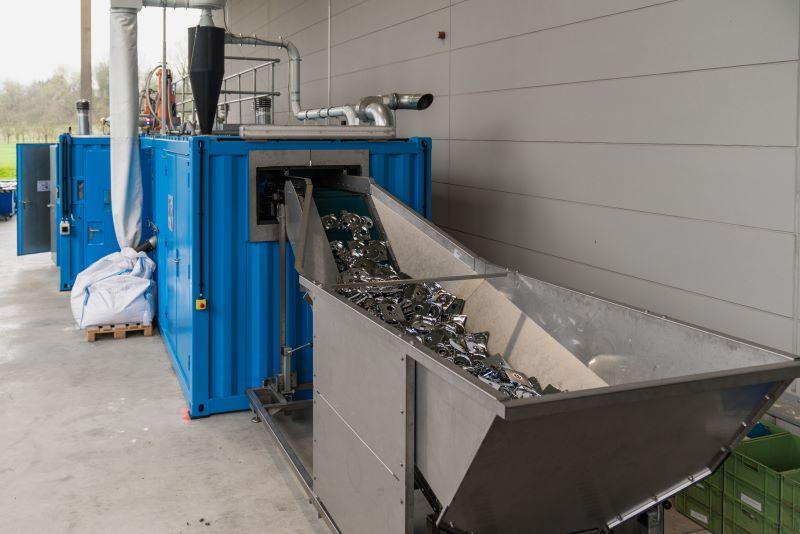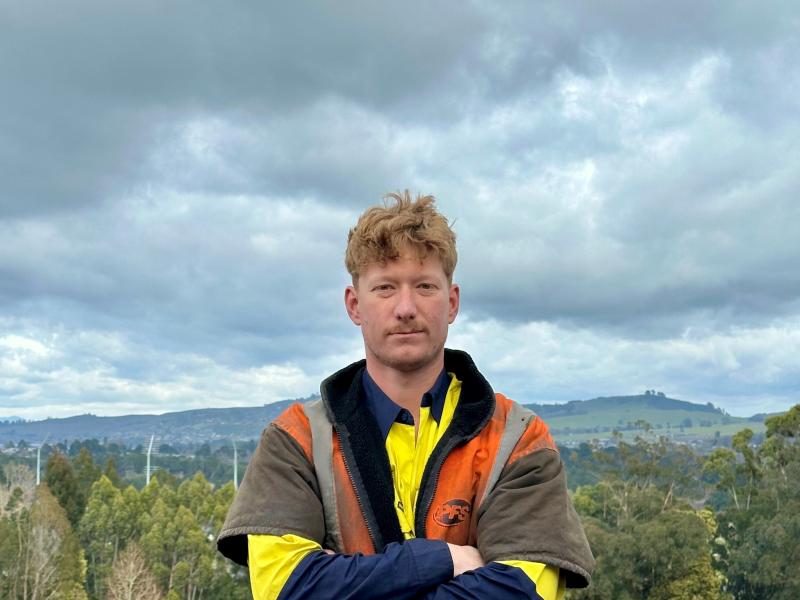Galvanised parts are among the last big challenges for recycling. because recovering the materials they contain is very technically complex, previous procedures have generally only concentrated on one of the material fractions – usually the metals. The results of these processes achieved a low material purity that meant only downcycling of components was possible. These two factors made the costly and cumbersome recycling process barely economically viable in relation to the value of recovered material. However, now ImpulsTec GmbH has taken up the gauntlet and is implementing shockwave or electrohydraulic shredding technology – which is as yet not at all widespread in Germany – for separation of complex material compounds in industrial processes. At the start of the year, a custom-designed facility for stripping chrome-plated plastic parts through shockwave treatment, in combination with pre-shredding and magnetic separation, was commissioned at sanitary engineering manufacturer Hansgrohe. This facility can separate the production waste in bath and kitchen fittings with a resulting material purity of > 99.8 m%, which makes it possible to reuse both material fractions in premium components.
Because Hansgrohe Group sets very high quality standards in terms of shower, bath and kitchen fittings, a certain level of production waste is unavoidable. “The chrome-plated ABS plastic parts used to be a particular thorn in our side,” reports David Zapf, specialist for surface technology at Hansgrohe Group, referring to the housings for hand showers, pipe collars as well as knobs and buttons on fittings, for example. To give its products the necessary robustness and durability in use, the manufacturer creates a highly stable connection between plastic and metal. On the one hand this is an indicator of quality, however on the other, it presents major challenges for reprocessing, as Zapf reports: “Because it was previously not possible for us to internally separate the thin galvanic layer from the ABS while preserving both material fractions before this project, we used to hand chrome-plated parts over to external recycling partners.”
It was 2019 when Zapf, in the course of his master’s studies, finally became aware of ImpulsTec’s shockwave technology, which promised recovery of both material fractions with a high level of purity. From 2021 to the beginning of 2023, the two companies worked together to develop a procedure for stripping the galvanised plastic components. To do this, they combined the shockwave treatment with pre-shredding as well as subsequent magnetic separation. The facility has now been in operation at the Hansgrohe production site in Offenburg/Elgersweier since the start of 2024.
Pilot facility in three containers for outdoor installation
“Due to the local circumstances at Hansgrohe, the new facility had to be suitable for installation outdoors, and not exceed 22 m in length and 10 m in width,” explains ImpulsTec Managing Director Stefan Eisert. “That’s why we designed the pilot facility to operate within three weather-proof container units.” As the galvanised parts to be recycled are of different sizes and complexity levels, the first container deals with pre-shredding and includes a screening column. The homogenous granulate obtained in this process is subject to proprietary shockwave treatment in the second stage. This involves the pre-treated raw material being placed into a water bath; brief ignition of an electric arc between two electrodes within the medium creates mechanical shockwaves that gradually separate the individual material fractions from one another. The used water is then filtered and subsequently returned to the shockwave process in a closed loop.
The post-process material is conveyed to the third container and dried there. The individual material fractions are then separated by means of magnetic separation. The majority of this – 70 to 80 percent – is plastic. In order for this to be usable for premium new products, it must have a stable purity of > 99.8 m%. The remaining material fraction is composed of copper, nickel and chrome from the galvanic coating, which is delivered to metal processing companies. “As this facility is a completely new concept, in the course of development we had to thoroughly try out and optimise all process steps as well as their interlinking and interaction. Doing so means we are now able to fulfil Hansgrohe’s demanding requirements in terms of material purity,” adds Eisert.
Reuse of 98% of raw materials
At Hansgrohe, the new facility operates on around 250 working days per year, for eight hours each day. This results in an annual throughput of 100,000 kg of chrome-plated plastic. “Thanks to electrohydraulic shredding, we can now reuse 98 percent of raw materials from our production waste in this area,” reports Zapf. “This represents a major step toward our circular economy goal. After all every resource that does not need to be obtained in the first place protects our ecosystems in the long term and saves energy as well as water in production processes.” The manufacturer is already proving this with the hansgrohe Pulsify Planet Edition product line launched in 2023, which comprises components made from recycled plastic.
The success of using electrohydraulic shredding of galvanised plastic parts to facilitate reuse of both material fractions marks a milestone for recycling technology in the industrial sector. Zapf also gives a positive summary of the collaboration with ImpulsTec. Hansgrohe is already examining the extent to which shockwave technology could even be used for future recycling of complete products, i.e. fittings that have already been used by customers. “The application of our newly developed stripping process for sanitary products was only the first step,” concludes Eisert. “In the automotive industry as well as in the electronics sector, our technology also opens up new possibilities for reuse of production waste as well as product components at the end of their lifecycle.”






